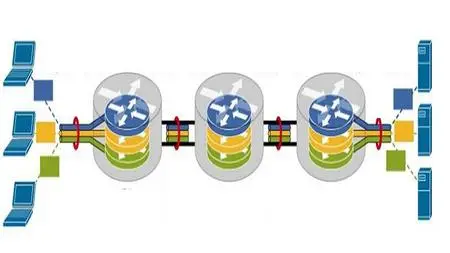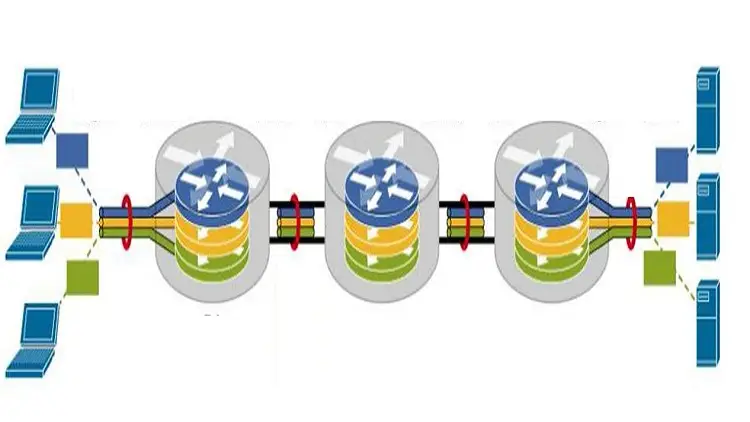Easy Virtual Network (EVN)
Published 03/2023
Duration: 01:58:47 | .MP4 1280x720, 30 fps(r) | AAC, 44100 Hz, 2ch | 967 MB
Genre: eLearning | Language: English
Published 03/2023
Duration: 01:58:47 | .MP4 1280x720, 30 fps(r) | AAC, 44100 Hz, 2ch | 967 MB
Genre: eLearning | Language: English
Concepts , Configuration and Verification
What you'll learn
Easy Virtual Network (EVN) Introduction
Easy Virtual Network (EVN) benefits
Easy Virtual Network (EVN) configuration
Easy Virtual Network (EVN) verification
Requirements
CCNA Routing knowledge
Description
Deliver traffic separation and path isolation capabilities on a shared network infrastructure with Easy Virtual Network (EVN). An IP-based network virtualization solution, EVN takes advantage of existing Virtual Routing and Forwarding (VRF)-Lite technology to simplify Layer 3 network virtualization, improve support for shared services, and enhance management and troubleshooting.
Easy Virtual Network (EVN) is an IP-based network virtualization solution that helps enable network administrators to provide traffic separation and path isolation on a shared network infrastructure. EVN uses existing Virtual Route Forwarding (VRF)-Lite technology to:
Simplify Layer 3 network virtualization
Improve shared services support
Enhance management, troubleshooting, and usability
What Problems Does It Help Solve?
EVN reduces network virtualization configuration significantly across the entire network infrastructure with the Virtual Network Trunk. The traditional VRF-Lite solution requires creating one sub interface per VRF on all switches and routers involved in the data path, creating a lot of burden in configuration management.
EVN removes the need of per VRF sub interface by using “vnet trunk” command. This helps reduce the amount provisioning across the network infrastructure
EVN enhances network virtualization troubleshooting by making VRF-Lite easier to deploy, operate, and scale. A routing context command mode allows network operators to perform troubleshooting issues that pertain specifically within a VRF without specifying the VRF name in every command.
Who this course is for:
Cisco Network Engineers
More Info



